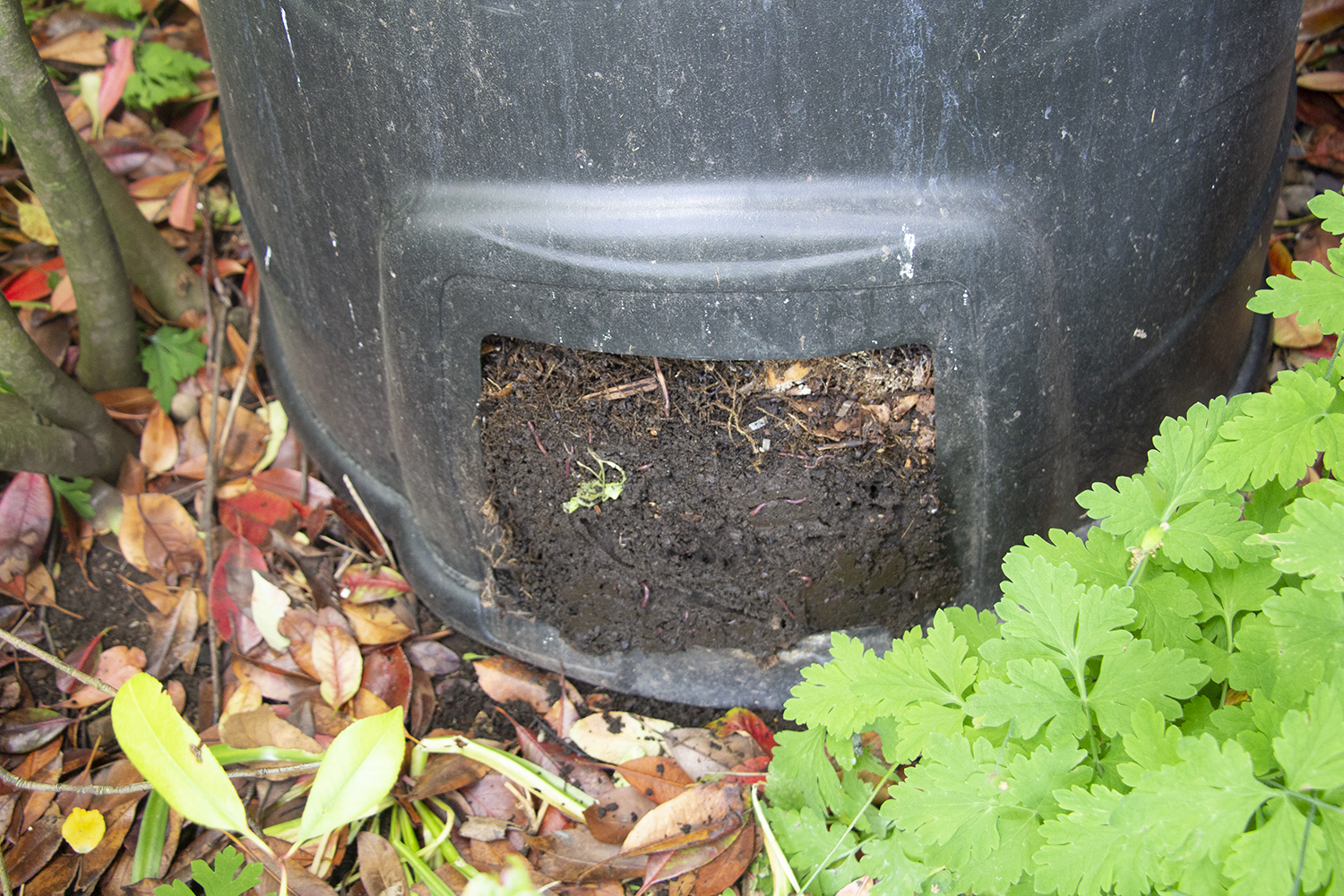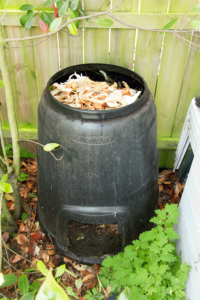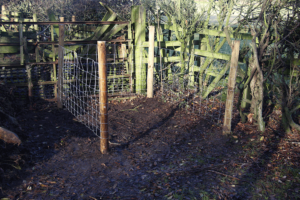All gardens produce some waste be it weeds, grass cuttings or dead flower heads and virtually all have soil which benefits from some additional organic matter. The local authority will take it away, often for a charge, or you can recycle your garden waste as compost and reduce the amount you have to buy. The problem is there is a little more to it than just making a heap of garden rubbish and hoping for the best. People complain that that they end up with a foul smelling mound and this is always the result of believing that just heaping up all the grass cutting will make compost. It doesn’t! To be a success a compost heap needs a varied diet.
The way to start is to create an area for the compost and decide how you are to contain it. The easiest way in a small garden is to buy one of the plastic compost bins, they come in various sizes and can be place in a discreet corner out of sight. They need no base to sit on, if anything they are better placed straight on to the bare earth. Larger gardens may need something a little more ambitious but here it need not be very fancy. Some cheap fence post with strong netting stapled to them will do, the kind sold for pig netting should do. Now the important part filling it.
A lot of research has been done on composting and it has been found that a successful compost heap starts with 30 times as much carbon in it as nitrogen but a lot of things you want to compost do not have that golden mix of carbon and nitrogen. Some things like grass cuttings have a lot more nitrogen than this and some like cardboard have a lot less. Now in addition 3 more things are important the temperature, the amount of water and the amount of air.
In the UK the outside temperature is going to be beyond your control and in practice is of little importance. How moist the heap is also usually not an issue unless you add a lot of dry material or we have a long dry spell. In practice as long as the heap is moist, not sodden, you should be alright.
This only leaves the carbon to nitrogen ratio. In practice though this can be simplified by dividing material into high nitrogen, generally green, waste and low nitrogen, generally brown, waste and mixing them in the ratio of 2 green waste to 1 brown waste.
Green waste is things such as grass cuttings, weeds, plant clippings, manures and vegetable scraps.
Brown waste tends to be leaves, hay and straw, sawdust, wood chippings, shredded paper, old compost.
Note:
Some brown waste, such as dry leaves, can be very bulky so try to imagine them pressed tight together when gauging how much your adding.
Try to mix the different materials to stop dense layers forming, grass cuttings are particularly bad for this. If you have a lot of grass cuttings you may be better taking it to the council recycling centre and letting them compost it.
Don’t get too hung up on the proportions; the natural course is for things to breakdown, you’re just encouraging things along. Just make sure the heap gets a varied diet.
If the heap starts to look dense and slimy with a smell you need to mix in some brown waste like shredded paper, compost heaps shouldn’t smell!
If the heap looks dead and dry it needs some green waste, compost heaps hardly ever need to have water added to them.





